- Home
- David McCullough
Truman Page 2
Truman Read online
Page 2
It was also in that summer of 1846 that Anderson Truman came on from Kentucky, and, for some unexplained reason, on horseback, which was one of the few exceptional things ever recorded about Anderson Truman. Possibly he couldn’t afford boat passage.
Of this first Truman to reach Jackson County, there is not a great deal to be said. His full name was Anderson Shipp (or Shippe) Truman. His people were English and Scotch-Irish and farmers as far back as anyone knew. His father, William Truman, had come into Kentucky from Virginia about 1800 and reportedly served in the War of 1812. Andy, as he was called, grew up on the Truman farm near the tiny crossroads village of Christianburg, Kentucky. He was slight, gentle, soft-spoken, thirty years old, and without prospects. Nonetheless, Mary Jane Holmes, who was five years younger, had seen enough in him to defy her mother and marry him. On the pretext of visiting a married sister, she had returned to Kentucky earlier that summer and once there, announced her intentions.
Her mother, the redoubtable Nancy Tyler Holmes, was horrified, as she let Mary Jane know in a letter from Missouri dated July 24, 1846—a letter dictated to another of her daughters, which suggests that Nancy Tyler Holmes may have been illiterate. Since hearing the news she had been unable to sleep or eat. “Mary are you the first daughter I have that has refused to take my advice?” What made Anderson Truman so unacceptable is unclear. An explanation given later was that Mother Holmes thought Mary Jane was “marrying down,” since the Trumans had no slaves.
The wedding took place in Kentucky in mid-August at the home of the married sister, a handsome red-brick house with white trim that still stands. Then Mary Jane’s “Mr. Truman,” as she would always refer to him, set off by horse for “the wild country” of Missouri, intending to stay only long enough to secure the blessing of his new mother-in-law.
His first letter from Missouri reached Mary Jane a month later. To his amazement, he had been welcomed with open arms, her mother and sisters all hugging and kissing him, everybody laughing and crying at once. He was urged to stay and take up the frontier life. He could be happy anywhere, even in Missouri, he wrote to Mary Jane, if only she were with him. “As for myself I believed that I would be satisfied if you was out here…I believe I can live here if you are willing.”
She arrived by steamboat, and with her mother’s blessing and the wedding gift of a Holmes slave named Hannah and her child, the young couple settled on a rented farm belonging to a prominent local figure, Johnston Lykins, a Baptist missionary (preacher and physician) who had come to the frontier originally to bring salvation to the Indians, but had lately turned to land speculation. He and others were in the throes of founding a new town on the Missouri’s great bend, at the juncture of the Kansas River and the Missouri, this to be ambitiously named Kansas City. To such men the future was in towns and trade. They talked of geographic advantages plain to anyone who looked at a map. Here was the Missouri, the great “natural highway” downstream to St. Louis, and so to New Orleans, Louisville, or Pittsburgh. There, upstream, beyond the great bend, stretched all the Northwest and its immeasurable opportunities.
Here also, importantly, began the overland trails to Santa Fe, California, and Oregon. Jackson County was the threshold, the jumping-off point, to an entire second America of dry grasslands reaching clear to the Rockies. In a newly published guidebook to the Santa Fe Trail called Commerce of the Prairies (1844), the author, Josiah Gregg of Jackson County, portrayed Independence as the port of embarkation for the “grand prairie ocean.”
In fact, Independence, “Queen City of the Trails,” was the country’s first western boomtown, and to newly arrived settlers, after long days on the river, it seemed a metropolis of stores, blacksmith sheds, wagon shops, of crowded streets and unceasing commotion. The crack of bull-whips split the air like rifle fire as wagon trains made up for Oregon. Mexican caravans from Santa Fe rolled in with still more wagons, pack mules, and hundreds of thousands of dollars in Mexican gold to be spent on American trade goods. The spring Solomon Young and his family arrived, one Santa Fe caravan of twenty-two wagons is reported to have brought $200,000 in gold specie. Like a seaport town Independence had a customshouse.
“Mules, horses, and wagons at every corner,” observed Francis Parkman. “Groups of hardy-looking men about the stores, and Santa Fe emigrant wagons standing in the fields around…. Some of these ox-wagons contained large families of children, peeping under the covering.”
The permanent population of Independence by the 1840s was perhaps only seven hundred people, but on any spring day two or three thousand would be congregated in or about Jackson Square, at the center of which stood a trim red-brick courthouse with a fanlight over the door. Of the several public houses around the Square, the largest and best known, the two-story, brick Noland House, was acclaimed the westernmost hotel in America, offering accommodations for four hundred guests, provided no one minded sleeping two or three to a bed. The nearby wagon shops were the shipyards of the “prairie ocean” and no wagons supposedly were better suited for the rigors of a prairie crossing than those built by a free black man named Hiram Young, an enterprising manufacturer who, like nearly everyone involved with the feeding, housing, or outfitting of emigrants, was prospering handsomely.
But it was land that the Kentucky people came for, the high, rolling, fertile open country of Jackson County, with its clear springs and two “considerable” rivers, the Little Blue and the Blue, both flowing out of Kansas Territory. Every essential was at hand—limestone quarries, splendid blue-grass pastures very like those of Kentucky, and ample timber where the creeks and rivers ran. “To live in a region devoid of the familiar sight of timber seemed unendurable,” reads one old chronicle, “and the average Kentuckian could not entertain the idea of founding a home away from the familiar forest trees.” They counted hickory, ash, elm, sycamore, willow, poplar, cottonwood, and oak in three or four varieties. Walnut, the most prized, was the most abundant. Entire barns and houses were to be built of walnut.
It was land beautiful to see, rising and falling in broad swells and giving way to long horizons. Prairie grass was “high and green.” Wildflowers, wild herbs—meadow rose, turtlehead, snakeroot, wolfberry, thimbleweed—grew in fragrant profusion everywhere the prairie remained unbroken, and starting about ten miles south of Independence the country was nearly all still prairie.
To cut through the sod with a plow took six to eight yoke of oxen. Horses wouldn’t do. But beneath the crust, the dark prairie loam could be two to six feet deep. In places along the river bottoms, it was 20 feet deep. Josiah Gregg, the guidebook author, having seen all the country from the Missouri to the Rio Grande, declared that the “rich and beautiful uplands in the vicinity of Independence might well be denominated the ‘garden spot’ of the Far West.”
Much of the best land, it happens, was already under cultivation. Moreover, it had been violently contested when, a decade earlier, the “garden spot” had been the setting for what were politely referred to as the Mormon Difficulties. In 1831, only a few years after the founding of Independence, a small, advance party of the Church of Jesus Christ of Latter-Day Saints arrived on the scene and were at first regarded by the local citizenry as little more than harmless fanatics. But more followed. They bought land, founded a settlement and a ferry crossing on Blue River, opened their own general store in Independence, and established the town’s first newspaper. Some began speaking out against slavery. In little time, seen as a threat, they were decried as “the very dregs” of the East, vicious, immoral, and in education “little above the condition of our blacks.” That they referred to the Indians across the border in Kansas Territory as their fellow tribes of Israel struck many hard-bitten old pioneers as close to insane.
More ominous was their announced intention to become proprietors of the entire region. Joseph Smith, their prophet and leader, proclaimed Jackson County holy land and commanded that Independence become their City of Zion. By the summer of 1833, with the Saints in the county numbe
ring more than a thousand, or roughly a third of the population, it appeared they might control the fall elections. A mass meeting was called at the courthouse. Angry speeches were made and a proclamation issued declaring Mormons no longer welcome.
Violence quickly followed. A mob smashed the Mormon printing press, a Mormon bishop was tarred and feathered. On Halloween night armed riders, “without other warrant than their own judgment of the requirements of the situation,” attacked the Mormon settlement on Blue River, driving women and children from their homes. Crops and barns went up in flame, men were dragged into the fields and flogged. Jackson County was in a state of “dreadful fermentation.” In another clash three men were killed.
When, on the night of November 12, the skies ignited in a spectacular meteor shower like none ever seen on the Missouri frontier, many took it as a sign to rid the land of Mormons once and for all. More than a thousand people were forced from their homes and driven across the Missouri River into less settled territory to the north, where their persecutions only grew worse, but with the difference now that they fought back. The governor of Missouri, an Independence storekeeper named Lilburn W. Boggs, called out the militia and declared that for the public good all Mormons must leave the state or be “exterminated.” A religious war was under way, Missouri’s first civil war, and ended only when the Mormons departed for Illinois in 1839.
Such events were past history by the time Solomon Young and his small family arrived in 1841. Yet only a year later, in 1842, a lone assassin, a Mormon presumably, crept to a window in Independence and shot Lilburn W. Boggs, all but killing him. As favored by nature as the Blue River country may have been, it was no peaceable kingdom.
Nor was nature ever entirely benign in Missouri, as the new settlers learned soon enough. Winters could be severe, or marked by weeks of raw gloom when the whole country looked as grim and hard as iron. The cold cut to the bone. The diary of one farmer, though written years later, speaks for generations of Jackson County people:
Awful cold; I did not work today, too cold; Colder than it has been this year; I slept cold; Cloudy and wind blowing; I am chilly; Tremendous windy and cold; Cold, blue cold this morning…too cold to work; Awful cold, all of us housed up, nobody stirring; I got very cold….
It was a climate of great extremes, even in the span of a day. Temperatures could rise or drop 50 degrees in a matter of hours. Summers turned too dry or too wet and either way were nearly always broiling hot. The year 1844 brought the worst floods on record, followed by a tornado that tore up trees and fences and killed a number of people.
But then no one came to the frontier expecting things to go easily, least of all a farmer.
Solomon and Harriet Louisa Young made their start on a farm known as the Parrish place, not far from the Missouri River and well within the projected outlines of Kansas City. Then, shortly afterward, in 1844, possibly because of the flood, they made a first claim to public land on high ground back from the Blue River approximately sixteen miles south of Independence, near the settlement of Hickman’s Mills, on what was called Blue Ridge. It was high, fertile, well-drained ground, ideal grazing country, good for corn and wheat, as high and fine as any land in the county, with distant views miles into Kansas Territory.
This first Blue Ridge claim comprised just 80 acres, the minimum purchase required by the Land Act, and Solomon Young paid $1.25 an acre, the minimum price for public land. To gain title he was also obliged to occupy the land for a time, and consequently stories were passed down of how he and Harriet Louisa came there with “a gun and an axe and two babies and a blanket.” Grandchildren would listen to Harriet Louisa tell how Solomon rode off to file his claim at the land office at Clinton, seventy miles distant, and describe the nights she spent in a shelter of fence rails and brush, alone with the two children, Susan Mary and William, who, if not exactly babies any longer, were still quite small.
The family expanded and so did Solomon’s holdings. Six more children were born—Sarah Ann, Harrison, Elizabeth, Laura Jane, Martha Ellen, and Ada—as ever larger parcels of land were acquired. A house and barn went up. Blue Ridge became the homeplace. Solomon’s financial setbacks were frequent and might have crushed a less resilient spirit, but by reputation he was one of the best farmers and stockmen in the county and in the long run he prospered. He had an eye for horses, he knew mules, he knew land, and he bought and sold either at every opportunity. In time he established a trans-prairie freighting enterprise and amassed landholdings that, for Jackson County, amounted to a small empire. Indeed, by all accounts, Solomon Young was a remarkable man, and considerably more is known about him and Harriet Louisa than about Anderson or Mary Jane Truman.
He was born in Shelby County, Kentucky, near the town of Simpsonville, in 1815, the year of Andrew Jackson’s triumph at the Battle of New Orleans, which made him twenty-six when he came to Missouri. His father, Jacob Young, was a Revolutionary War veteran from North Carolina. His mother, Rachael Goodnight Young, died when he was twelve. When his father remarried and moved on, Solomon was left to fend for himself, earning his keep weighing hogs and trading livestock. Full grown he was tall, powerful, self-reliant, bounding with energy, and a world-beating talker. Talk was nourishment for Solomon, as it never was for Harriet Louisa.
Unlike so many who came out from Kentucky, he was neither Scotch-Irish nor a Baptist, but of German descent (the name had been spelled Jung in North Carolina) and only a nominal Methodist. Skeptical of preachers or anyone who made too much show of religion, he liked to say that whenever he heard a man praying loudly, his first instinct was to go home and lock the smokehouse. Politics interested him not at all.
Solomon had married Harriet Louisa Gregg in the second week of January 1838. She was Scotch-Irish, her people ardent members of Kentucky’s first and largest Baptist congregation, the Long Run Baptist Church at Simpsonville, which had been built on land once owned by Abraham Lincoln’s grandfather, Captain Abraham Lincoln. Her first child was born in 1839, her second two years following, the same spring she and Solomon started west, which means she must have been nursing the baby on the boat trip up the Missouri. Remembered for her imperturbable disposition, no less than her abundant red hair, Harriet Louisa was not known to have complained or lost heart then or at any time afterward, whatever happened. “She was a strong woman…and there wasn’t a thing in the world that ever scared her,” it would be said. Her last pregnancy was in 1856, but the baby did not survive. Nearly forty, she was well past middle age by the standards of the day, yet still short of midpoint in what was to be an extremely long, eventful life.
Exactly when Solomon went west on the first of his wagon-train expeditions, leaving Harriet Louisa in charge of everything, is not clear. It is known only that he went several times prior to the Civil War, beginning as early perhaps as 1846, the momentous year of the Mexican War and the trek of the Mormons out of Illinois to the Great Salt Lake (not to mention the year of Anderson Truman’s arrival in Independence). Such undertakings were epic in scale, in any event. The customary overland train was made up of forty to eighty giant canvas-covered freight wagons, each requiring six yoke of oxen or mules and two drivers. A single wagon and team stretched 90 to 100 feet. And since the practice under way was to keep the wagons about 100 feet apart, some trains would be strung across the prairie for as far as three miles. To keep his bearings, Solomon carried a brass telescope, like a sea captain.
The goods hauled could be worth a fortune, $30,000 or more, and the profits, if all went as planned, could be correspondingly large. Solomon, who at census time now listed himself as a freighter, appears to have done quite well. In 1850, his recorded wealth was $5,000. Ten years later, he was worth ten times that. At age thirty-five he could count himself a wealthy man, with land and property valued at nearly $50,000. He is said to have owned as much as 5,000 acres, fancy, blooded horses, and there was real silver on the table.
Because the Santa Fe Trail first headed south out of Independence, before
swinging west across the Blue River, it passed within only a few miles of the Young farm. Solomon would depart in the spring. Large and full-bearded, wearing a wide-brimmed hat, he must have been something to see as he pushed off, as his family saw him and remembered him—a man “who could do pretty much anything he set his mind to.” Once, he started for California with a herd of fifteen hundred cattle. It took him a year and he lost five hundred cattle on the way, but he made it, through every kind of weather and hardship, across half the continent. At Sacramento he traded the surviving herd for a ranch of 40,000 acres. But this, as the story goes, he was forced to sell to cover the debts of a partner. A man made good on his debts, a man stood by his friends. And a world-beating talker had a tale to tell his children, and they theirs.

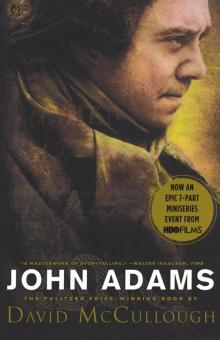 John Adams
John Adams The Greater Journey: Americans in Paris
The Greater Journey: Americans in Paris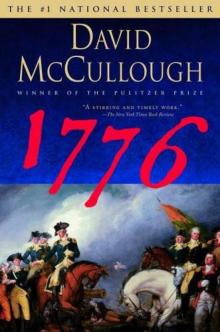 1776
1776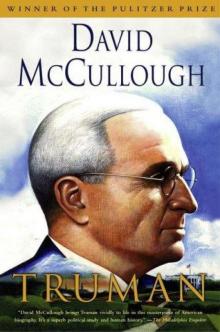 Truman
Truman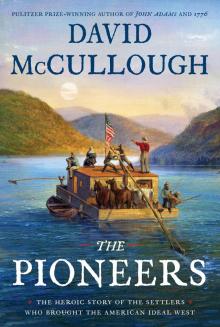 The Pioneers
The Pioneers The Great Bridge: The Epic Story of the Building of the Brooklyn Bridge
The Great Bridge: The Epic Story of the Building of the Brooklyn Bridge The American Spirit
The American Spirit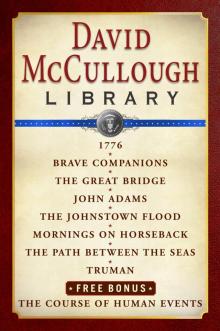 David McCullough Library E-book Box Set
David McCullough Library E-book Box Set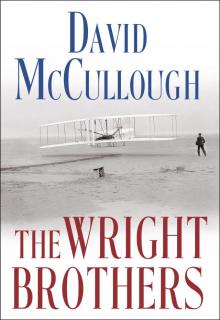 The Wright Brothers
The Wright Brothers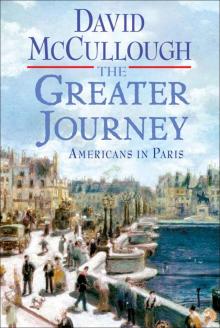 The Greater Journey
The Greater Journey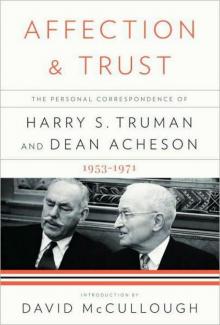 Affection and Trust: The Personal Correspondence of Harry S. Truman and Dean Acheson, 1953-1971
Affection and Trust: The Personal Correspondence of Harry S. Truman and Dean Acheson, 1953-1971 The Great Bridge
The Great Bridge